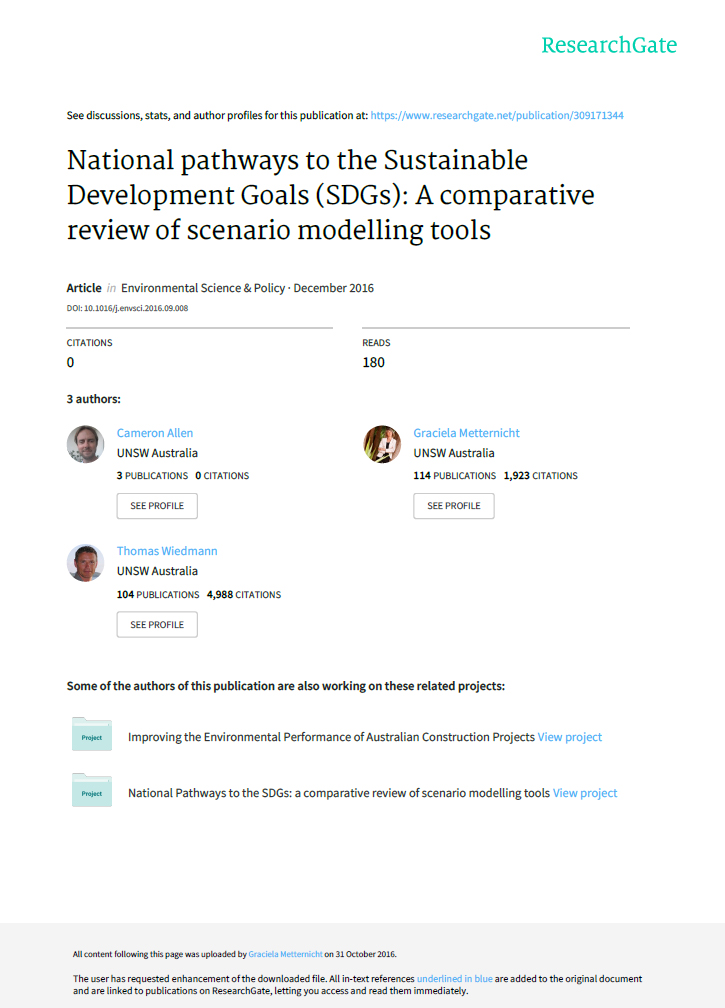Publications
National pathways to the Sustainable Development Goals (SDGs): A comparative review of scenario modelling tools
Publication Year: 2016 Publisher: ResearchGateBackground
In September 2015 the global community adopted the 2030 Agenda for Sustainable Development, which includes a set of 17 Sustainable Development Goals (SDGs) and 169 targets. The new goals aim to build on the achievements of the Millennium Development Goals (MDGs) and set a transformative agenda that emphasizes integration and balance among economic, social and environmental aspirations.
The SDGs are set to become a critical component of the new international development framework for all countries and will have major implications for national development planning efforts in the post-2015 period. While the goals themselves will be universal, it will be left to countries to select national targets and ultimately determine their own priorities and level of ambition in terms of the scale and pace of transformation. Integrated, nationally-owned SDG strategies will be at the centre of national efforts.
Compared with the MDGs, the SDGs represent a far broader and more integrated, complex and challenging agenda for countries to implement. They also apply to both developing and developed countries. The timeframe for achieving the goals will be medium- to long-term, with most goals and targets corresponding to a 2030 time horizon.
Governments will face many challenges in choosing realistic yet ambitious national targets and setting out the most cost-effective and appropriate pathways towards achieving them. Given the broad scope of the SDGs, policy-makers will need to be able to easily assess the economic, social and environmental implications of their strategies in an integrated way over the long-term.
With national implementation of the SDGs commencing in early 2016, this paper explores the strengths and weaknesses of contemporary modelling tools and gaps in current modelling capabilities in the context of national development planning for the SDGs, using a novel policy screening and criteria-based approach.
The SDGs are set to become a critical component of the new international development framework for all countries and will have major implications for national development planning efforts in the post-2015 period. While the goals themselves will be universal, it will be left to countries to select national targets and ultimately determine their own priorities and level of ambition in terms of the scale and pace of transformation. Integrated, nationally-owned SDG strategies will be at the centre of national efforts.
Compared with the MDGs, the SDGs represent a far broader and more integrated, complex and challenging agenda for countries to implement. They also apply to both developing and developed countries. The timeframe for achieving the goals will be medium- to long-term, with most goals and targets corresponding to a 2030 time horizon.
Governments will face many challenges in choosing realistic yet ambitious national targets and setting out the most cost-effective and appropriate pathways towards achieving them. Given the broad scope of the SDGs, policy-makers will need to be able to easily assess the economic, social and environmental implications of their strategies in an integrated way over the long-term.
With national implementation of the SDGs commencing in early 2016, this paper explores the strengths and weaknesses of contemporary modelling tools and gaps in current modelling capabilities in the context of national development planning for the SDGs, using a novel policy screening and criteria-based approach.

